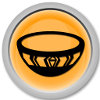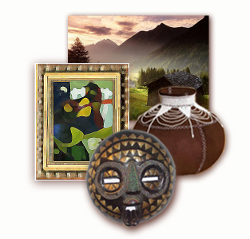|
|
 ArtBusinessOD ArtBusinessOD
A web-based CMS (content management system) that is ideal for fine art dealers, antique dealers, galleries and consultants.
Concept
Anything made by a person, or people, can be documented using the concept of Producer, Description and Management. The ArtBusinessOD uses a similar concept to the HumanitiesCMD which also makes it a research tool; however, it contains an extensive Management module to look after all the financial aspects of running a business. It also offers valuable cilent relations functionality.
Scope
A Producer can be an artist, photographer, maker, creator, . . . an individual, group of people, a business, . . . whoever is involved with the creation of an item.
A Description includes what is it made of, it's size, what is it called, . . . Artwork, furniture, clothing, photograph, . . . in fact anything can be described.
Management records expenses relating to each item, price paid, sale details, offers, insurance value, . . . including other Management functions such as provenance, where is it stored, what condition is it in, . . .
The ArtBusinessOD is ideal for fine art dealers, antique dealers, galleries, consultants, . . .
The ArtBusinessOD can be used as a simple inventory system, or an extensive research tool.
Full specifications
- Concept: this product is a fully relational database that is more than a simple inventory system, it tracks financial and management information along with extensive descriptive and research-based information about an item and who made it.
- Scope: anything from a painting to a chair has a producer (an individual, a group of people, an organisation, etc); it can also be described (size, materials, etc) and it can be managed (bought, sold, etc).
- Approach: the database uses the concept of core and specific information, i.e. there are certain categories that record core information (i.e. name of the item, name of producer, etc), but there is also specific information (exact measurements, biographical details, etc). The database accommodates this by storing core information and relating specific information when necessary.
- Description of an Item: a large number of categories are available to record descriptive information about an item, such as: title, type, physical description, measurements, medium, keywords, dates, etc.
- Producer: this includes the identity, dates, geographical location, biographical details, etc. of an artist, photographer, maker, creator, . . . whether an individual, group of people or a business.
- Item management details: there are a number of management features available such as: provenance, administrative information, storage details, condition, stock-taking history, expenses relating to each item, price paid, sale details, offers, insurance value, etc.
- Global management: you can monitor running totals (costs, sales, etc.), that are a result of filtered data; plus, running totals of your entire inventory. These include total sales, insurance values, total costs, total profit, etc.
- Quick Capture Wizard: let this wizard guide you through adding information to the database if you are a new user. If you are an experienced user, use this to add information to the database very quickly. These wizards are also useful if you are unfamiliar with the product but need to access the information without knowledge of finding and filtering techniques.
- Online Profiles: assign artworks to a profile for your client to view via their login.
- Notes: there are a number of areas where you can keep documentation and management notes.
Documentation and Management
Computerisation has dramatically changed this and most collections are either computerised or in the process of becoming so. Click here to read more about how to go about this.
|

|
Collections
Some information about types of collections, computerising, documenting, accessing, and more . . . click here
|

|
|
 ArtBusinessOD
ArtBusinessOD










